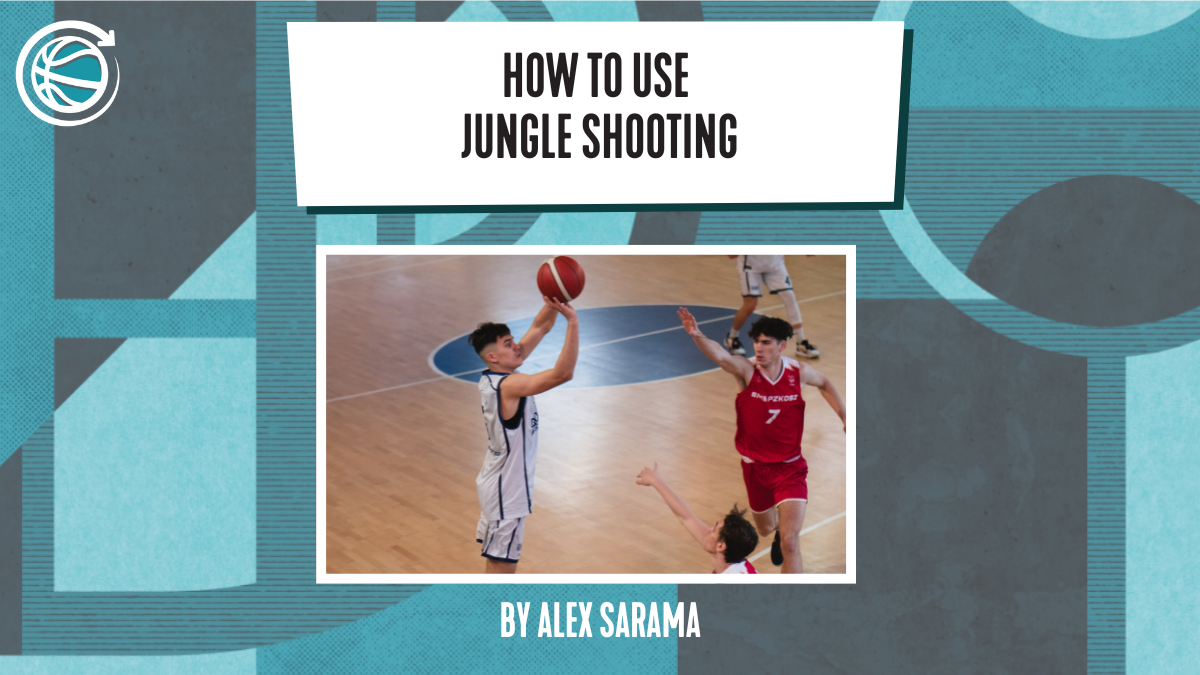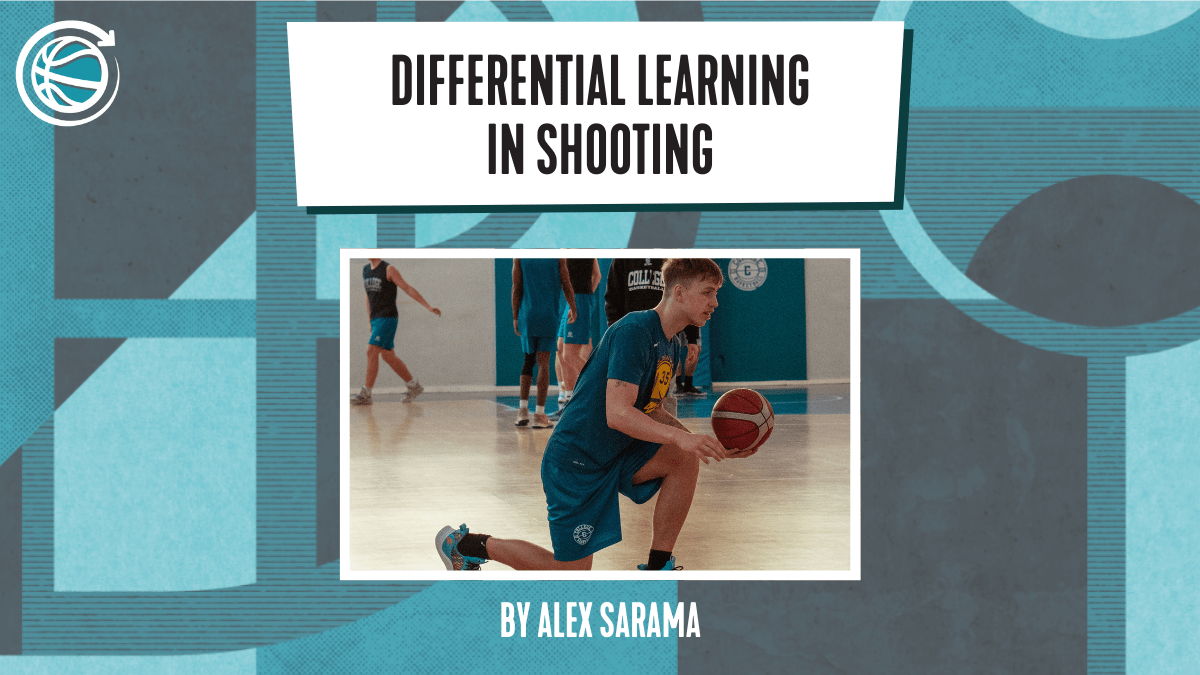How To Use Jungle Shooting To Improve Your Team’s Shooting
How to Use Jungle Shooting
🤯Chaos Shooting
👉 2 balls, 2v2, 3v2, 4v2 all allow for good time on task.
▪️Offense can shoot threes, pass or drive but no rim finishes.
🏀This is something we are doing most practices. Let’s take a look behind the mess to understand the value of an SSG like this… pic.twitter.com/G0JcxfHIAX— Alex Sarama (@AlexJSarama) January 30, 2022
Are you searching for a representative small-sided game to improve your team’s shooting? Jungle shooting is one of our favourite activities at Transforming Basketball, and it can be used with players of all levels!
The Problem with Traditional Shooting Drills
The problem with many shooting drills are evident in how coaches make the decision for players as to what shot they will take and where they will shoot from. Every shot is predetermined. Shooting in the game is the complete opposite to this.
A SSG such as jungle shooting provides varied affordances. These include exploring opportunities to get open and break the three-in-a-row, multiple drive and pass decisions, running triggers if neutral, finding coverage solutions etc. For a shooting task to be game-like, players have to be nudged towards taking more jump shots than other basketball actions, but critically they still have to have the scope to do other things such as driving and passing. Otherwise, the scenario is likely to be too artificial and not representative of what happens in a game.
Contested Shooting
A problem with many of the live shooting activites used currently is how they are not game-like because of the lack of a passing option. While it’s great to see coaches incorporating live defenders, the over-constraining nature of the game leads to players shooting poor quality shots. The goal is to shoot open shots, not heavily contested ones. Because these SSG’s are over-constrained, they lose their benefit.
To develop world class players, they certainly need to shoot with a hand in their face and against a heavy contest. However, a balance has to be sought between heavily contested shooting games and “designing in” an affordance to pass. Afterall, shot selection is one of the biggest factors influencing shooting percentages.
No Shot is the Same
Jungle shooting provides an example of how no shot is ever the same. This is therefore a lot more game-like, particularly with passes coming from different locations, speeds, spins etc versus perfect chest passes coming from under the basket (as seen in most shooting drills).
This is the main consideration for coaches wishing to apply the five design principles of a nonlinear pedagogy (NLP) in shooting. Movement degeneracy has to be embraced as it is physically impossible to repeat the same shot within the game. Blocked, constant drills such as spot shooting are simply counterproductive to developing skilled shooters. Basketball games are dynamic and fast-paced, just like jungle shooting.
Looking for more ideas to improve your team’s shooting? Listen to E10 of the Transforming Basketball Podcast…
Motor Performance Research within the Jump Shot
This is a good opportunity to highlight the research related to the influence of a defender on the motor performance of the jump shot. This has been demonstrated in studies by Rojas et al., 2000 and Gorman and Maloney, 2016.
Gorman and Maloney (2016) found that the presence of a defender led to faster shot executions, longer jump times, and longer ball flight times. Even at the NBA level, the proximity of a defender influences shooting accuracy. When NBA players have a wide open shot (the defender more than 6 ft away), the average shooting accuracy of 3PT shots is 38.1%. For open shots (4–6 ft), 35.4%; for tight shots (2–4 ft) 31.2%, and for very tight shots (0–2 ft), this is 26.4% (NBA Advanced Stats, 2017 data).
This has very important implications for how we practice. While a lot of players like spot shooting (including new players when I first start working with them), this doesn’t necessarily mean that it is good for them! I have found during previous seasons that the shooting percentages of my players have gradually increased the more the players have adopted some of the more unconventional shooting methodologies (such as DL).
Making Small Changes
Even in basic shooting drill such as spot shooting, we can incorporate simple changes to promote variability and improve the effectiveness of the task. Players may use different passes, shots could be contested, the shooter could always change location and triggers could be mixed in.
In a blog post, Australian basketball coach Jack Fleming wrote about the importance of practicing with real contested shooting activities. “Shots in the 2012 Olympics were charted and discovered that around 15% of shots were uncontested. This means that around 85% of the time, players were having to shoot the ball with a defender coming at them making them change their shot. Interestingly, of the 85% of contested shots, just over 50% of these were executed with very high levels of defensive pressure.” Critically, we must ask the question as to how often players are exposed to these affordances in practice? This is the exact reason we place such a value on tasks such as jungle shooting.
How to Explain Jungle Shooting
To run jungle shooting, bursts must be applied as opposed to traditional rotations (offense to defense etc). Therefore, the offense and defense will stay for 60 seconds before a short rest of 10 seconds before the next sequence commences.
When starting with this, I tend to not immediately play loud music. This allows for more verbal connections, making it a little easier for the offense. I then quickly progress to playing loud music or arena sounds! This encourages the offense and defense to connect above the noise.
Some ideas for task constraints are provided below:
- The offense can only shoot threes, but for younger players allow mid-ranges.
- Choose the format based on how many baskets and players you have (2-on-2, 3-on-2, 3-on-3, 4-on-3 all work well).
- Can use two or three basketballs. The offense can pass, shoot, drive or run a trigger. The defense can do what they want but they must rebound the shot attempts (e.g. double team one player, contain). They guard different players during the duration as opposed to staying fixed to one.
- Offense must work amongst the chaos to seek out the best ROB shot (Range, Open, Balanced).

Jul 1, 2024
Alex Sarama



